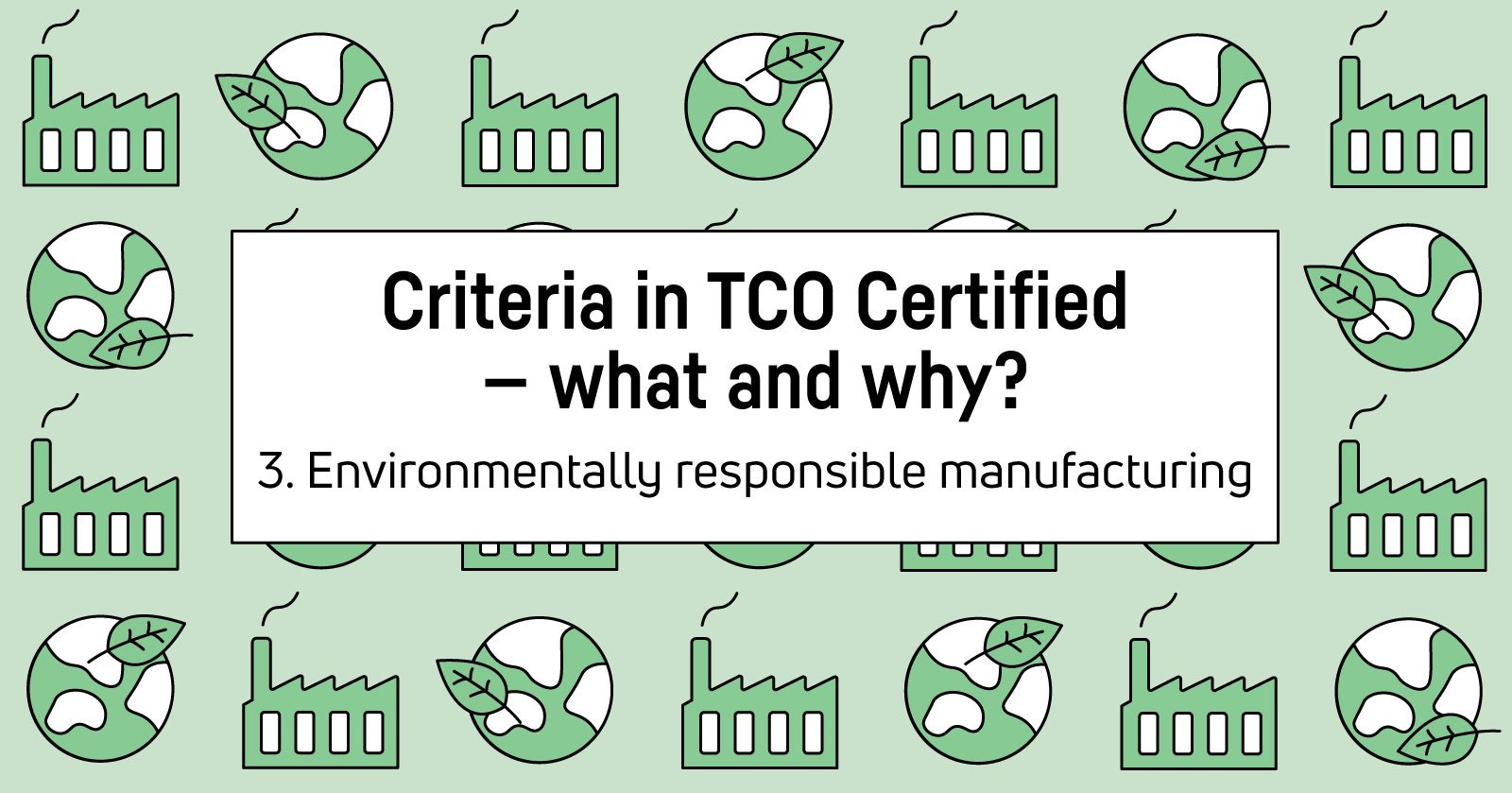Large amounts of natural resources and energy are used to manufacture IT products. This consumption can lead to soil, water and air pollution, as well as large greenhouse gas emissions. To reduce environmental risk, TCO Certified ensures that the environmental impact is measured, and that environmental and energy management systems are implemented.
Several environmental hazards occur throughout the IT product life cycle. The manufacturing process is a large risk. Harmful substances that are not handled safely risk ending up in nature. Life cycle assessments confirm that a typical IT product consumes more energy during its manufacture than during its entire usable life, resulting in large greenhouse gas emissions which impacts our climate. Another risk is the extensive use of natural resources in manufacturing, leading to a high energy consumption and the loss of valuable, finite resources.
Criteria in TCO Certified — what and why?
This series of articles cover the eight criteria areas in TCO Certified. We go through the most critical sustainability challenges connected to IT products and how you can reduce the risks by including TCO Certified in procurement. All criteria are mandatory, and compliance with criteria is always independently verified.
Our approach: measuring and incentivizing reduced environmental impact
With TCO Certified, the brand owner must have an environmental management system in place, and work systematically with continuous improvement in environmental performance. Gathering information on material reuse and energy efficiency in the assembly phase is important and creates incentives for reducing the product’s carbon footprint.
Environmentally responsible manufacturing criteria focus on:
- Lowering environmental risk and ensuring continual improvements by requiring that all final assembly factories are certified according to ISO 14001 and have an environmental management system in place.
- Putting the spotlight on energy efficiency in manufacturing through annual reporting.
- Lowering energy use in manufacturing by requiring compliance with ISO 50001.
- Gathering information about post-consumer recycled content and renewable materials to help buyers identify more circular products.




